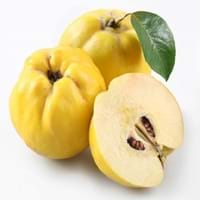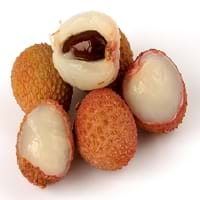Health Benefits
Cancer prevention, Cures gastro-intestinal troubles, Reduces nervous tension, Ulcer prevention
Cancer prevention, Cures gastro-intestinal troubles, Heart care, Muscle pain relief, Prevents blindness from diabetes
General Benefits
Anti oxidant properties, Anti-inflammatory properties, Boosts immune system, Controls blood pressure, Digestive aid, Eye care, Helps in weight loss, Improves blood circulation, Maintains healthy cholesterol level
Boosts immune system, Digestive aid, Fights against infections, Helps in weight loss, Maintains healthy cholesterol level, Strengthens bones
Skin Benefits
Anti-aging benefits, Reduces wrinkles
Anti-aging benefits, Skin rejuvenation
Hair Benefits
Regulates hair growth
Promotes longer and healthier hair, Protects hair
Allergy Symptoms
NA
Coughing, Diarrhea, Headaches, Hives, Itching, Labored Breathing, Nausea, Runny nose, Swelling of mouth, tongue or lips, Vomiting, Watery eyes
Side Effects
Allergic reaction
May cause abdominal pain, Diarrhoea, Mouth irritation, Throat irritation, Weight gain
Best Time to Eat
As a snack in the late afternoon, Don't consume at night and before bed, Eat the fresh ones, avoid mixing with any other foods, don't eat after meal., Morning time (before lunch)
As a snack in the late afternoon, Don't consume at night and before bed, Eat the fresh ones, avoid mixing with any other foods, don't eat after meal., Morning time (before lunch), Strictly avoid empty stomach
Vitamin B5 (Pantothenic Acid)
Vitamin C (Ascorbic Acid)
Vitamin E (Tocopherole)
Not Available
Vitamin K (Phyllochinone)
Not Available
Lutein+Zeaxanthin
Not Available
Calories in Fresh Fruit with Peel
Not Available
Calories in Fresh Fruit without Peel
Not Available
Calories in Frozen Form
Not Available
Calories in Canned Form
Not Available
Type
Tree fruit
Tree fruit, Tropical
Season
Winter
Spring, Summer
Varieties
Meech’s Prolific, Lusitanica, Champion and Vranja AGM
Emperor fruit, Mauritiu, Sweet Heart, Brewster, Haak Yip and Bengal
Color
Green, Yellow
Bright red, Pink red
Inside Color
White
Greyish-white
Taste
Tart
Crunchy, Juicy, Sweet
Origin
Iran, South-West Asia, Turkey
China, Indonesia, Philippines, Vietnam
Soil Type
Loam, Well-drained
Alluvial, Loam, Well-drained
Climatic Conditions
Warm
Absence of strong wind, Cold, Dry, Without frosts
Facts about
- Due to its strong & fruity aroma, brides consumed quince to ensure "perfumed lips".
- It is also called as ‘Pear of Cydonia’, being native to Caucasus and Iran.
- They call it as the ‘golden apple’ of Greek Mythology.
- The seed of Lychee fruit is toxic & can adversely affect the digestive system.
- This fruit gives a smoky flavor when eaten dried.
- This fruit is a symbol of love and romance in China.
Top Producer
Turkey
China
Other Countries
Algeria, Argentina, Azerbaijan, China, Iran, Morocco, Serbia, Spain, Uzbekistan
Australia, India, South Africa, Thailand, United States of America
Top Importer
United States of America
Hong Kong
Top Exporter
Argentina
China
Botanical Name
Cydonia oblonga
Litchi chinensis
Synonym
C. vulgaris
Nephelium litchi
Subkingdom
Tracheobionta
Tracheobionta
Division
Magnoliophyta
Magnoliophyta
Class
Magnoliopsida
Magnoliopsida
Family
Rosaceae
Sapindaceae
Species
C. oblonga
L. chinensis
Generic Group
Rose
Soapberry
Difference Between Quince and Lychee
We might think that Quince and Lychee are similar with respect to nutritional value and health benefits. But the nutrient content of both fruits is different. Quince and Lychee Facts such as their taste, shape, color, and size are also distinct. The difference between Quince and Lychee is explained here.
The amount of calories in 100 gm of fresh Quince and Lychee with peel is 57.00 kcal and Not Available and the amount of calories without peel is Not Available and 66.00 kcal respectively. Thus, Quince and Lychee belong to and category.These fruits might or might not differ with respect to their scientific classification. The order of Quince and Lychee is Rosales and Sapindales respectively. Quince belongs to Rosaceae family and Lychee belongs to Sapindaceae family. Quince belongs to Cydonia genus of C. oblonga species and Lychee belongs to Litchi genus of L. chinensis species. Beings plants, both fruits belong to Plantae Kingdom.









